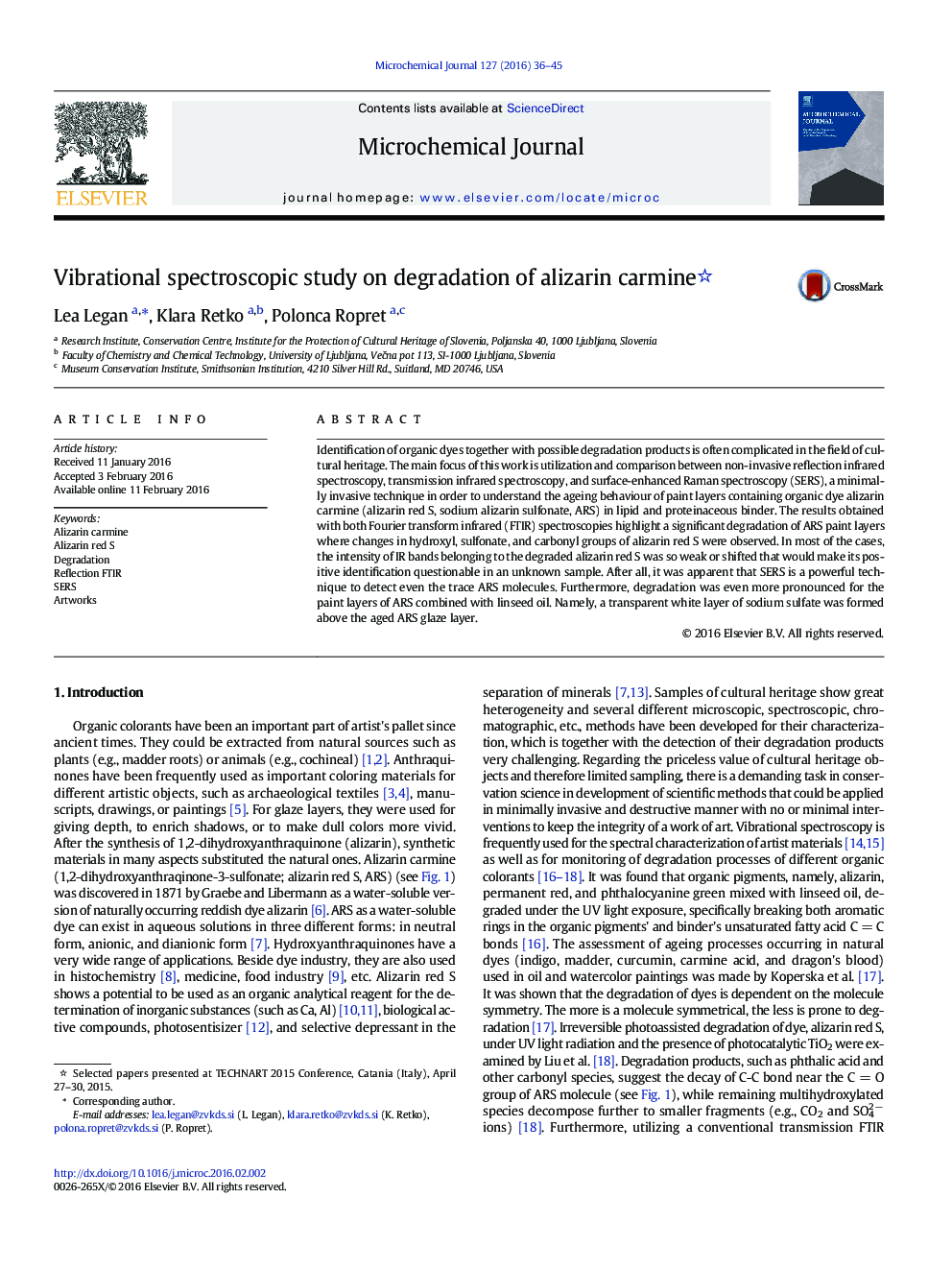| Article ID | Journal | Published Year | Pages | File Type |
|---|---|---|---|---|
| 1227498 | Microchemical Journal | 2016 | 10 Pages |
•Degradation of alizarin carmine paint layers (different binders)•Detection of Na2SO4 in a transparent layer present on the surface of the aged paint layer•Non-invasive reflection FTIR spectroscopy complemented with SERS
Identification of organic dyes together with possible degradation products is often complicated in the field of cultural heritage. The main focus of this work is utilization and comparison between non-invasive reflection infrared spectroscopy, transmission infrared spectroscopy, and surface-enhanced Raman spectroscopy (SERS), a minimally invasive technique in order to understand the ageing behaviour of paint layers containing organic dye alizarin carmine (alizarin red S, sodium alizarin sulfonate, ARS) in lipid and proteinaceous binder. The results obtained with both Fourier transform infrared (FTIR) spectroscopies highlight a significant degradation of ARS paint layers where changes in hydroxyl, sulfonate, and carbonyl groups of alizarin red S were observed. In most of the cases, the intensity of IR bands belonging to the degraded alizarin red S was so weak or shifted that would make its positive identification questionable in an unknown sample. After all, it was apparent that SERS is a powerful technique to detect even the trace ARS molecules. Furthermore, degradation was even more pronounced for the paint layers of ARS combined with linseed oil. Namely, a transparent white layer of sodium sulfate was formed above the aged ARS glaze layer.
